

Asian Art Lessons - Pinterest. Shibori: Japanese Resist Dye. Shibori is a fabric resist dying technique from Japan that uses different methods of stitching, binding, knotting, compressing, and folding fabric to resist dye from being absorbed.
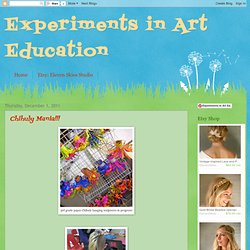
In my 4th grade class, students used 100% cotton fabric, watered down acrylic fabric paints, and clothes pins to create their very own Shibori fabric art! Steps: 1) Write name on fabric with sharpie (I used approximately 12"x18" sized pieces of fabric) 2) Dip fabric in water and then wring it out 3) Lay flat on table and fold like an accordion (1" wide) 4) Place clothes pins on damp fabric compressing the places you want to resist dye 5) Place compressed fabric in plastic tub and pick 2 of the 3 primary colors 6) Saturate the top of the fabric with dye 6) Turn fabric over to back and fill in any white spaces 7) Let sit for a minimum 2 hours (I let mine sit until the end of the day) 8) Take off clothes pins and press folded fabric between two towels to absorb any excess dye (DO NOT RINSE OUT!)
8f7e1747a9ff6acf35151fedc7025227. Gyotaku Fish Printing lesson: IslandWood Teacher Professional Development in Art Education. Koi Fish. I did koi fish a few years ago, and this year I revisited the lesson but with a new technique.Here is my last Koi project Japanese associate koi (also known as carp) with perseverance in adversity and strength of purpose.

Because of its strength and determination to overcome obstacles, it stands for courage and the ability to attain high goals. The Koi fish is also very strong physically, and can jump with its entire body out of the water. Art Project Girl: 1 Fish 100% Success! Easy Gyotaku. Here's a project with a 100% guaranteed success!
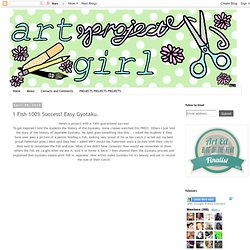
To get inspired I told the students the history of the Gyotaku. Some classes watched this PREZI. Others I just told the story of the history of Japanese Gyotaku. My spiel goes something like this. . I asked the students if they have ever seen a picture of a person holding a fish, looking very proud of his or her catch (I acted out my best proud fisherman pose.) First we created the background details with oil pastels. Gyotaku: Japan’s Old School Fishy Prints. Any keen fisher(wo)men among our readers?
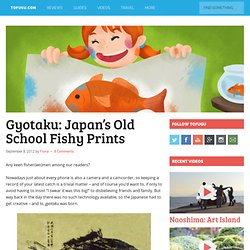
Nowadays just about every phone is also a camera and a camcorder, so keeping a record of your latest catch is a trivial matter – and of course you’d want to, if only to avoid having to insist “I swear it was this big!” To disbelieving friends and family. But way back in the day there was no such technology available, so the Japanese had to get creative – and lo, gyotaku was born. The oldest known gyotaku print is that of a carp, and is from 1839. Gyotaku (魚拓) or “fish rubbing” dates back to at least the Tempou era, and is still in practice today.
The two main variants, namely the direct and indirect methods, both use inks to transfer the likeness of the fish to a sheet of paper or cloth. ArtEd- Japan: gyotaku. Chinese Brush Painting- Bamboo for Beginner Students. Brushpaintings.com. A Painting Lesson Are you ready to do your own Chinese brush painting?
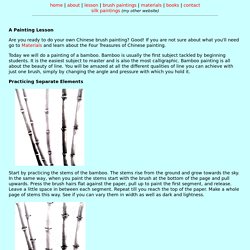
Good! If you are not sure about what you'll need go to Materials and learn about the Four Treasures of Chinese painting. Today we will do a painting of a bamboo. Bamboo is usually the first subject tackled by beginning students. Practicing Separate Elements Start by practicing the stems of the bamboo. Now fill in the bamboo nodes. Next practice painting a page of small branches.
Start a new sheet of paper to practice the leaves. Now practice grouping the leaves in patterns of twos, threes and fours. Chinese Lanterns. Chinese Landscape Scroll Paintings for 3rd Grade Art is Basic. This 3rd grade lesson was related to the Chinese scroll paintings.
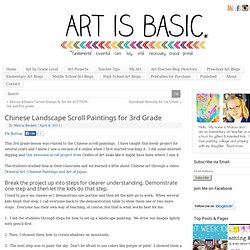
Japanese Kimino. Oriental fans with paper plates. 10 Asian Art Lesson Plans for Elementary or Junior High. Art teachers today are looking for more and more ways to integrate the study of other cultures into their Art curriculum.
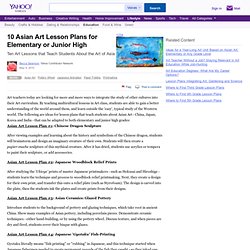
By teaching multicultural lessons in Art class, students are able to gain a better understanding of the world around them, and learn outside the 'easy', typical study of the Western world. The following are ideas for lesson plans that teach students about Asian Art - China, Japan, Korea and India - that can be adapted to both elementary and junior high grades: Sumi-e lanterns. Blue willow pattern. My Adventures In Positive Space: Blue Willow Plates in Tempera.
I first saw this lesson at the Use Your Colored Pencils blog, and knew I would be using it someday.

Thanks Anne! The supplies needed are minimal: white paper plates, tempera in blue/white/black, brushes and water. We practiced mixing shades and tints of blue for our designs. The cross-curricular opportunities range from poetry and storytelling, to the culture of China and its influence on pottery through out the world. We looked at a piece of Blue Willow china and discussed what images we saw on the plate. 'Two birds flying high, A Chinese vessel, sailing by. They were asked to chose one, or a few of the elements, but some did even more!